Onions (Allium cepa) are a staple in kitchens worldwide, prized for their flavor, versatility, and long shelf life. Beyond their culinary value, onions are relatively easy to grow in home gardens when proper techniques are followed. Achieving a bountiful onion harvest requires attention to soil preparation, planting methods, watering, fertilization, and pest management.
This article provides a comprehensive guide on how to grow onions successfully, from selecting seeds or sets to harvesting and storage, ensuring robust plants and a plentiful yield.
Why Growing Onions at Home Is Beneficial
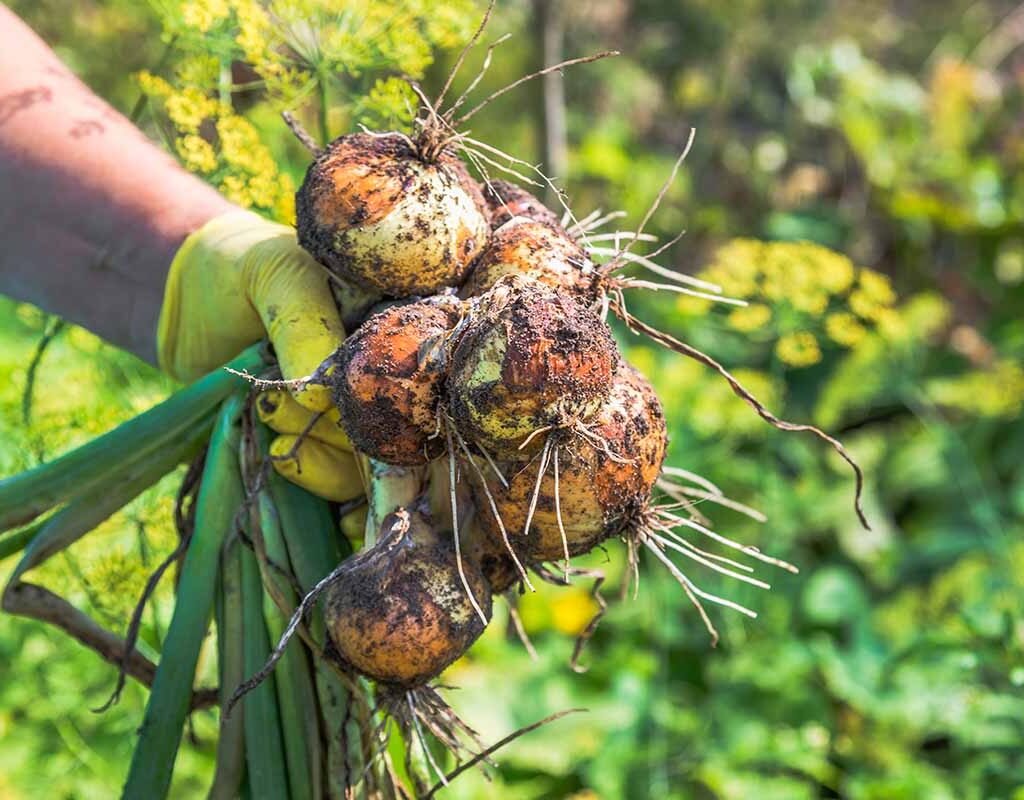
Growing onions at home offers numerous advantages:
- Freshness and Flavor: Homegrown onions are more flavorful than store-bought varieties.
- Variety Selection: Access to unique or heirloom varieties not commonly available in markets.
- Cost-Effective: Growing from seeds or sets is cheaper than purchasing mature bulbs.
- Nutritional Value: Fresh onions retain more nutrients compared to stored, processed options.
- Garden Health: Onions repel certain pests and can be used in companion planting to protect other crops.
Selecting the Right Onion Variety
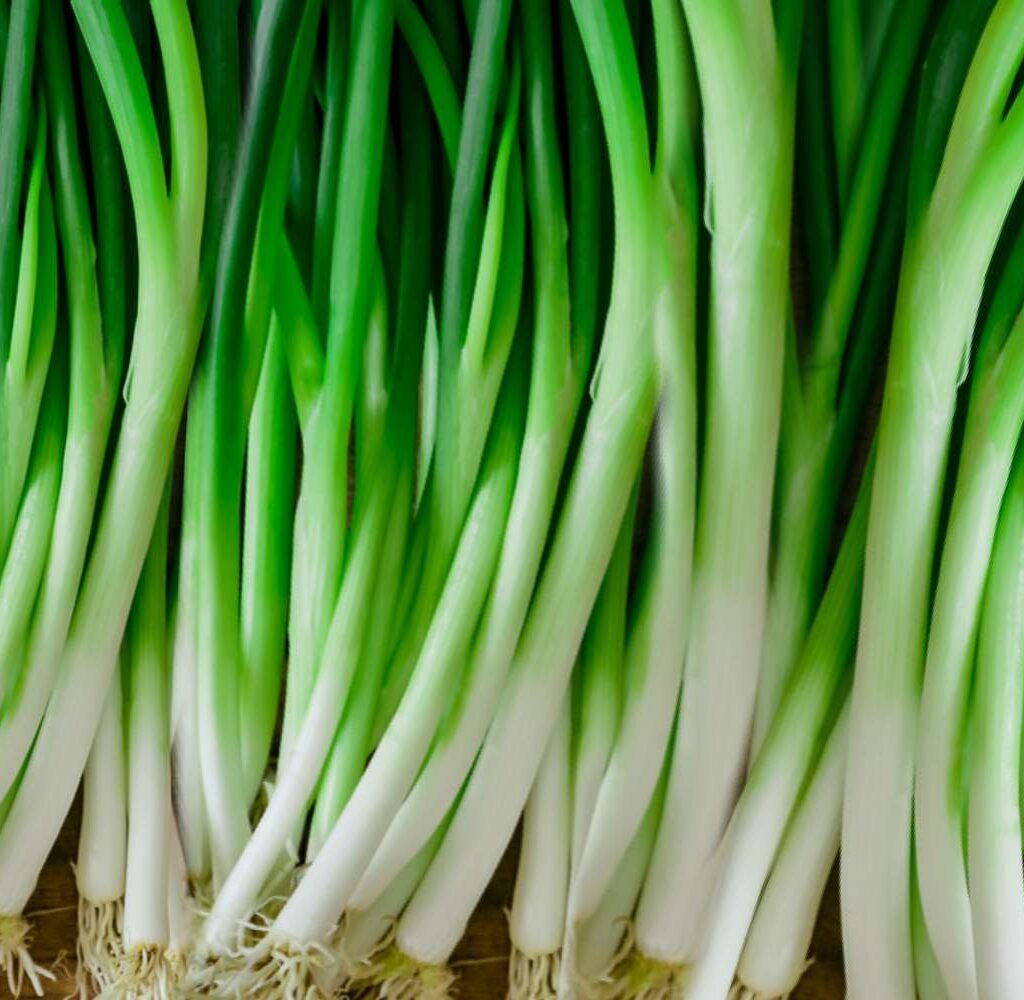
Onions come in three primary types, each suited for different climates and day lengths:
- Short-Day Onions: Ideal for southern regions with 10–12 hours of daylight. These onions form bulbs with less sunlight.
- Long-Day Onions: Suitable for northern regions with 14–16 hours of daylight. They require more sunlight to form bulbs.
- Intermediate-Day Onions: Adaptable to a range of latitudes and moderate daylight hours.
Tip: Choose varieties that are suited to your region’s day length for optimal bulb development.
Choosing Seeds, Sets, or Transplants
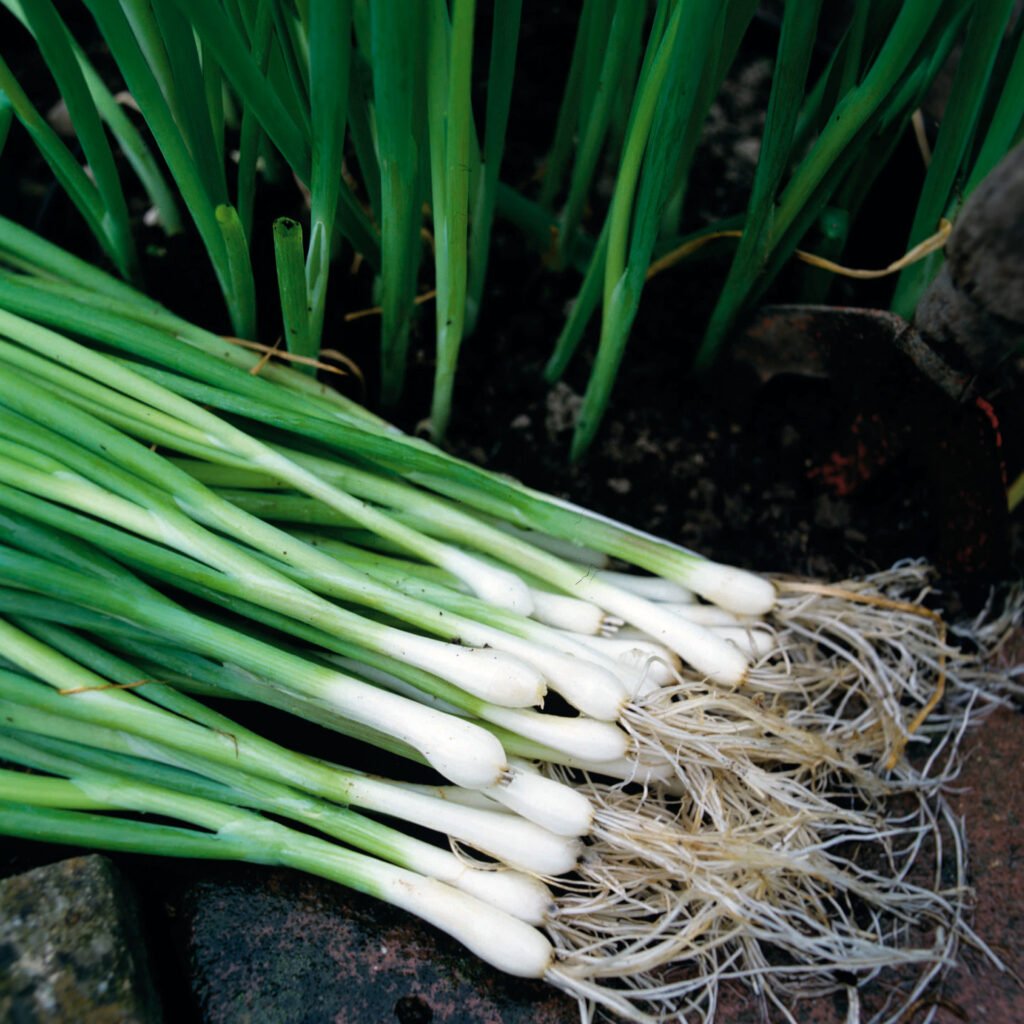
Onions can be grown from:
- Seeds: Offer the widest variety options but take longer to mature (100–120 days).
- Sets: Small, immature bulbs that produce quick harvests; easier for beginners.
- Transplants: Seedlings started indoors and transplanted; a compromise between seeds and sets.
Each method has its benefits, but starting from seeds allows for the most variety and control over the growing process.
Soil Preparation
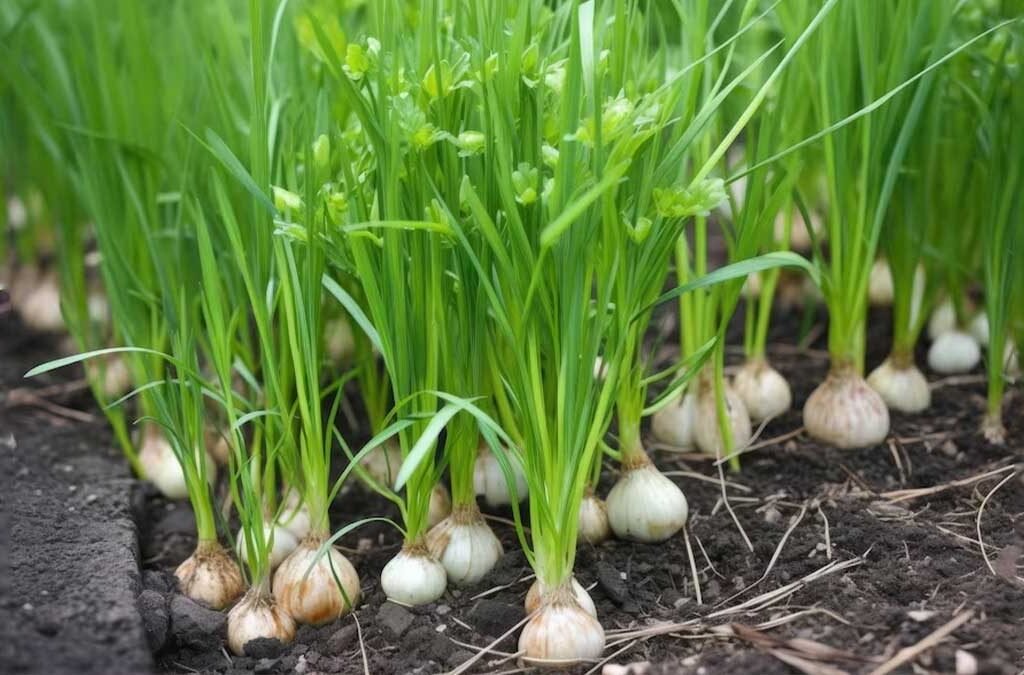
Onions thrive in well-draining, fertile soil with consistent moisture. Proper soil preparation is essential:
- Soil Type: Light, loamy soils are ideal. Heavy clay soils can be amended with sand or compost to improve drainage.
- Soil pH: Slightly acidic to neutral (6.0–7.0).
- Fertilization: Incorporate compost or well-rotted manure before planting. Avoid excessive nitrogen, which can promote leafy growth at the expense of bulbs.
Tip: Onions have shallow roots, so loose, fertile soil helps bulbs expand and develop fully.
Planting Onions
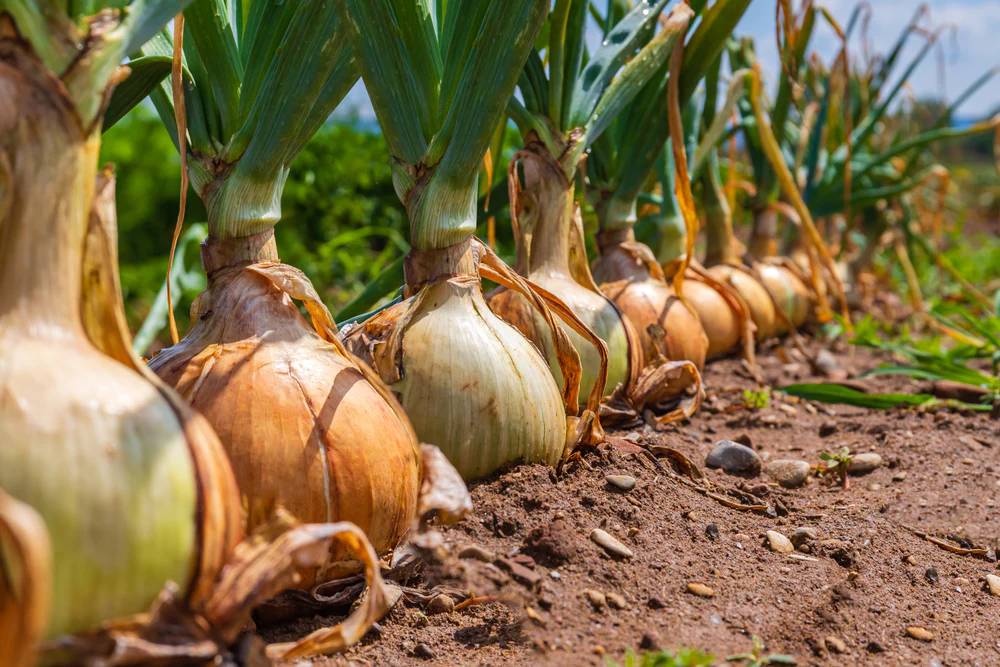
Planting from Seeds
- Sow seeds indoors 8–10 weeks before the last frost.
- Use seed trays with light, well-draining soil.
- Keep seeds moist and in a warm location (60–70°F / 15–21°C).
- Transplant seedlings outdoors when 6–8 inches tall, spacing 4–6 inches apart in rows 12–18 inches apart.
Planting from Sets
- Plant sets 1–2 inches deep with the pointed end up.
- Space 4–6 inches apart in rows 12–18 inches apart.
- Cover lightly with soil and water well.
Planting from Transplants
- Transplants should be planted at the same depth they were growing indoors.
- Space similarly to seeds or sets.
Tip: Plant onions where they will receive full sun (at least 6–8 hours daily) for optimal growth.
Watering Onions
Onions need consistent moisture for bulb development:
- Water deeply 1–2 times per week, depending on rainfall.
- Avoid overhead watering to prevent fungal diseases.
- Mulch around plants to conserve soil moisture and suppress weeds.
Tip: Keep soil evenly moist but not waterlogged. Fluctuating moisture can cause bulbs to split.
Fertilization
Onions are heavy feeders and benefit from ongoing nutrients:
- Apply a balanced fertilizer (10-10-10) every 3–4 weeks during early growth.
- Reduce nitrogen once bulbs start forming to encourage bulb development instead of leafy growth.
- Side-dress with compost or aged manure if growth appears slow.
Controlling Weeds and Pests
Weeds compete with onions for nutrients and water:
- Mulch to suppress weed growth.
- Hand-weed carefully to avoid damaging shallow roots.
Common pests and diseases:
- Onion maggots: Remove affected bulbs and rotate crops annually.
- Thrips: Use insecticidal soap if infestations occur.
- Fungal Diseases: Ensure proper spacing, avoid overhead watering, and rotate crops to prevent onion rot or downy mildew.
Tip: Companion planting with carrots, lettuce, or beets can reduce pest pressure. Avoid planting near legumes.
Supporting Bulb Formation
Onion bulbs develop gradually as the plant matures:
- Ensure adequate sunlight, as day length influences bulb size.
- Maintain even watering to prevent splitting or stunted growth.
- Remove flower stalks (scapes) from long-day varieties to encourage larger bulbs.
Tip: Keep soil loose around developing bulbs to allow expansion and aeration.
Harvesting Onions
Onions are ready for harvest when the tops begin to yellow and fall over:
- Gently loosen soil and lift bulbs with a garden fork.
- Allow bulbs to cure in a warm, dry, and ventilated area for 2–3 weeks.
- Trim roots and foliage after curing.
- Store in a cool, dry, dark place to extend shelf life.
Tip: Harvest early for “green onions” or scallions before full bulb development.
Storing Onions
Proper storage ensures onions remain usable for months:
- Keep bulbs in mesh bags or crates for air circulation.
- Avoid storing near potatoes, as they release moisture that can cause spoilage.
- Store in a cool, dry, dark location with temperatures around 32–40°F (0–4°C).
Tips for Maximizing Onion Yield
- Use Fertile, Well-Drained Soil: Ensures healthy growth.
- Provide Adequate Spacing: Prevents competition and disease spread.
- Maintain Consistent Moisture: Promotes bulb formation.
- Remove Flower Stalks: Focuses energy on bulb development.
- Rotate Crops: Reduces pest and disease buildup in soil.
Final Thoughts
Growing onions successfully requires careful attention from seed or set selection to soil preparation, watering, fertilization, and pest management. Proper spacing, sunlight, and moisture are critical for developing robust bulbs.
By following the steps outlined—choosing the right variety, planting at the correct depth, providing balanced nutrients, and maintaining healthy growing conditions—gardeners can achieve a bountiful onion harvest that provides fresh, flavorful onions for months.
Onions are not just easy-to-grow crops; they are a cornerstone of home gardening that reward patience and care with consistent, productive results. With proper planning and management, your garden can produce healthy, plump onions year after year, ensuring a continuous supply for culinary use, preservation, or sharing with friends and family.
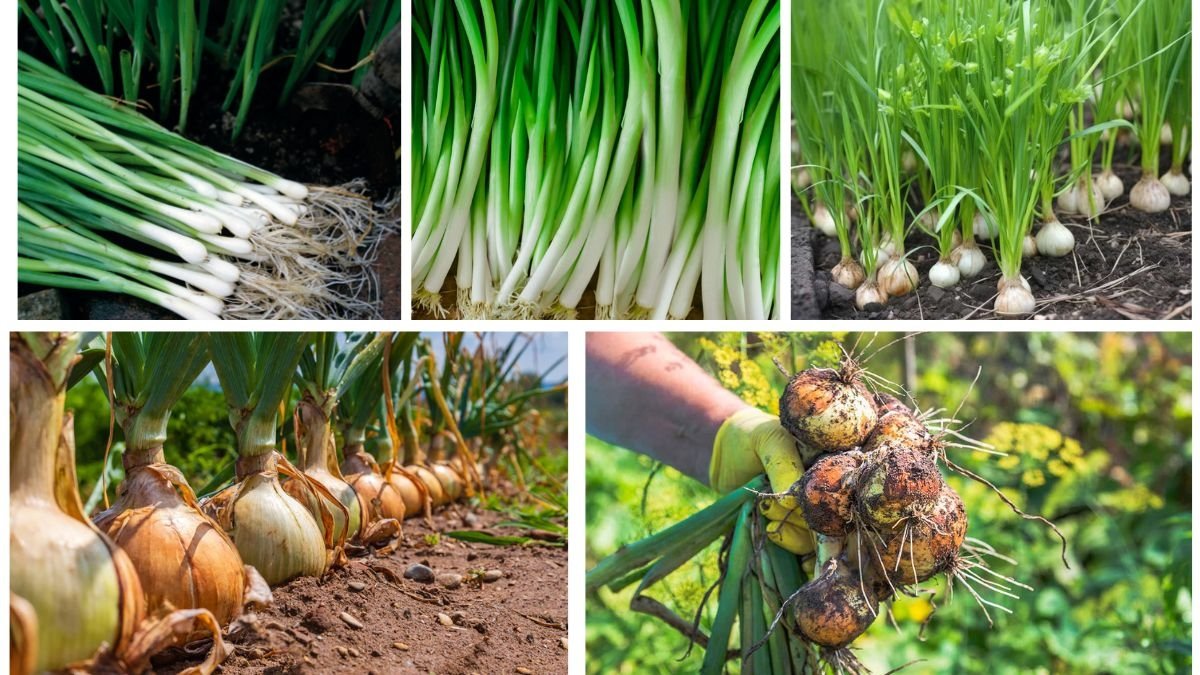





Leave A Comment